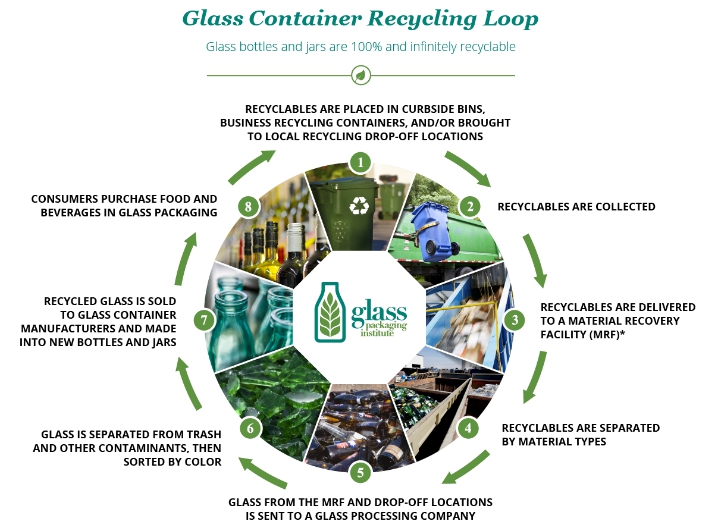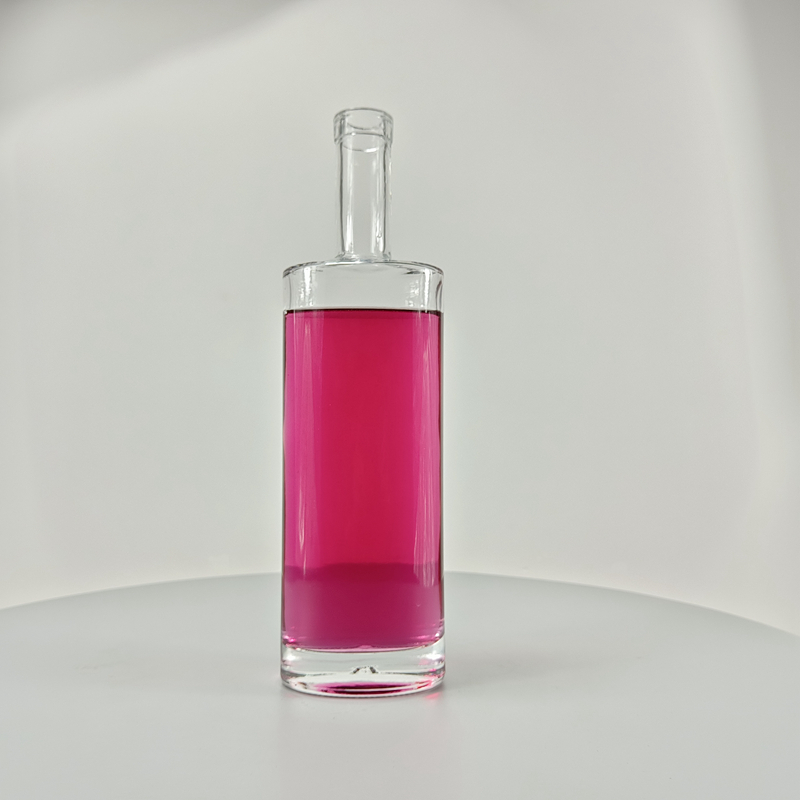Shandong yuncheng jingsheng Glass co. ltd
News
Glass is 100% recyclable and can be recycled endlessly without loss in quality or purity - something few food and beverage packaging options can claim.
Date: 20-07-2022ID: 7Views:


- Glass is 100% recyclable and can be recycled endlessly without loss in quality or purity.
- Glass is made from readily available domestic materials, such as sand, soda ash, limestone, and “cullet,” the industry term for furnace-ready recycled glass.
- The only material used in greater volumes than the cullet is sand. These materials are mixed, or “batched,” heated to a temperature of 2600 to 2800 degrees Fahrenheit and molded into the desired shape.
- Recycled glass can be substituted for up to 95% of raw materials.
- Manufacturers benefit from recycling in several ways: Recycled glass reduces emissions and consumption of raw materials, extends the life of plant equipment, such as furnaces, and saves energy.
- Recycled glass containers are always needed because glass manufacturers require high-quality recycled container glass to meet market demands for new glass containers.
- Recycled glass is always part of the recipe for glass, and the more that is used, the greater the decrease in energy used in the furnace. This makes using recycled glass profitable in the long run, lowering costs for glass container manufacturers—and benefiting the environment.
- Glass containers for food and beverages are 100% recyclable, but not with other types of glass. Other kinds of glass, like windows, ovenware, Pyrex, crystal, etc. are manufactured through a different process. If these materials are introduced into the glass container manufacturing process, they can cause production problems and defective containers.
- Furnace-ready cullet must also be free of contaminants such as metals, ceramics, gravel, stones, etc.
- Color sorting makes a difference, too. Glass manufacturers are limited in the amount of mixed color-cullet (called "3 mix") they can use to manufacture new containers. Separating recycled container glass by color allows the industry to ensure that new bottles match the color standards required by glass container customers.
- Some recycled glass containers are not able to be used in the manufacture of new glass bottles and jars or to make fiberglass. This may be because there is too much contamination or the recycled glass pieces are too small to meet manufacturing specifications. Or, it may be that there is not a nearby market for bottle-to-bottle recycling. This recovered glass is then used for non-container glass products. These "secondary" uses for recycled container glass can include tile, filtration, sandblasting, concrete pavements, and parking lots.
- The recycling approach that the industry favors is any recycling program that results in contaminant-free recycled glass. This helps ensure that these materials are recycled into new glass containers. While the curbside collection of glass recyclables can generate high participation and large amounts of recyclables, drop-off and commercial collection programs tend to yield higher quality recovered container glass.
Related products





